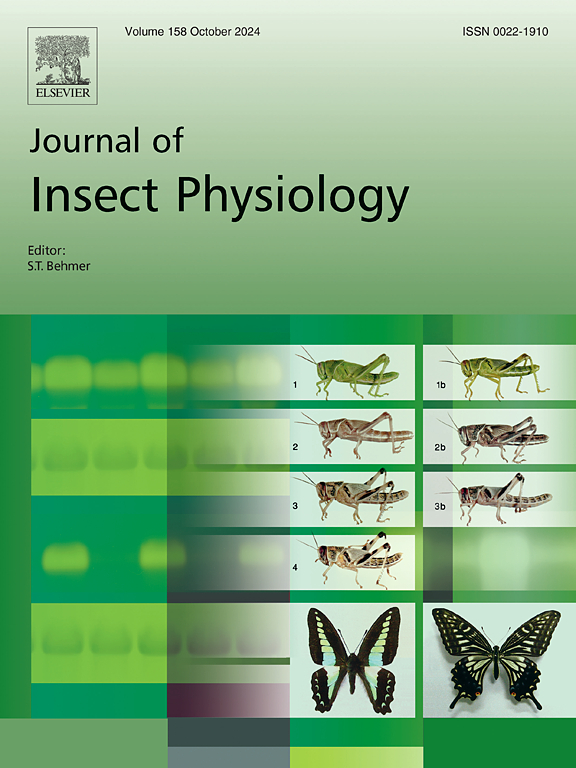A C-type lectin of Helicoverpa armigera maintains the stability of the hemolymph microbiota by regulating the expression of lysozyme
IF 2.3
2区 农林科学
Q1 ENTOMOLOGY
引用次数: 0
Abstract
An increasing body of evidence suggests that the insect hemolymph is not a sterile environment and that various nonpathogenic microorganisms can stably or transiently inhabit the hemolymph in many insect species. However, little is currently known about how the insect immune system maintains microbial homeostasis within the hemolymph. In this study, a C-type lectin of Helicoverpa armigera (HaCTL6) was shown to be involved in maintaining the stability of the hemolymph microbiota. The expression of H. armigera antimicrobial peptide (AMP) genes was down-regulated after RNAi of HaCTL6. Moreover, the knockdown of HaCTL6 resulted in a decrease in the antibacterial activity and an increase in the total bacterial load of the hemolymph. Transcriptome analysis showed that a lysozyme (HaLysozyme-like) was significantly down-regulated after HaCTL6 RNAi. Moreover, the knockdown of HaLysozyme-like led to a decrease in the antibacterial activity and an increase in the total bacterial load of the hemolymph. Furthermore, the injection of recombinant HaLysozyme-like into the hemocoel caused a significant reduction in the total number of bacteria in the hemolymph. These results indicate that HaCTL6 may regulate the homeostasis of bacteria in the hemolymph by utilizing HaLysozyme-like as an effector.

棉铃虫c型凝集素通过调节溶菌酶的表达来维持血淋巴微生物群的稳定性。
越来越多的证据表明,昆虫的血淋巴并不是一个无菌的环境,各种非致病性微生物可以稳定地或暂时地栖息在许多昆虫的血淋巴中。然而,目前对昆虫免疫系统如何维持血淋巴内微生物稳态知之甚少。本研究发现,棉铃虫c型凝集素(HaCTL6)参与维持血淋巴微生物群的稳定性。RNAi HaCTL6后,棉蚜抗菌肽(AMP)基因表达下调。此外,HaCTL6的敲低导致抗菌活性降低,血淋巴细菌总负荷增加。转录组分析显示,HaCTL6 RNAi后,一种溶菌酶(HaLysozyme-like)显著下调。此外,halysozyylike的敲除导致抗菌活性下降和血淋巴细菌总负荷增加。此外,将重组菌酶样注射到血淋巴中,可显著减少血淋巴中的细菌总数。这些结果表明,HaCTL6可能利用halysozyylike作为效应物来调节血淋巴内细菌的稳态。
本文章由计算机程序翻译,如有差异,请以英文原文为准。
求助全文
约1分钟内获得全文
求助全文
来源期刊

Journal of insect physiology
生物-昆虫学
CiteScore
4.50
自引率
4.50%
发文量
77
审稿时长
57 days
期刊介绍:
All aspects of insect physiology are published in this journal which will also accept papers on the physiology of other arthropods, if the referees consider the work to be of general interest. The coverage includes endocrinology (in relation to moulting, reproduction and metabolism), pheromones, neurobiology (cellular, integrative and developmental), physiological pharmacology, nutrition (food selection, digestion and absorption), homeostasis, excretion, reproduction and behaviour. Papers covering functional genomics and molecular approaches to physiological problems will also be included. Communications on structure and applied entomology can be published if the subject matter has an explicit bearing on the physiology of arthropods. Review articles and novel method papers are also welcomed.
 求助内容:
求助内容: 应助结果提醒方式:
应助结果提醒方式:


